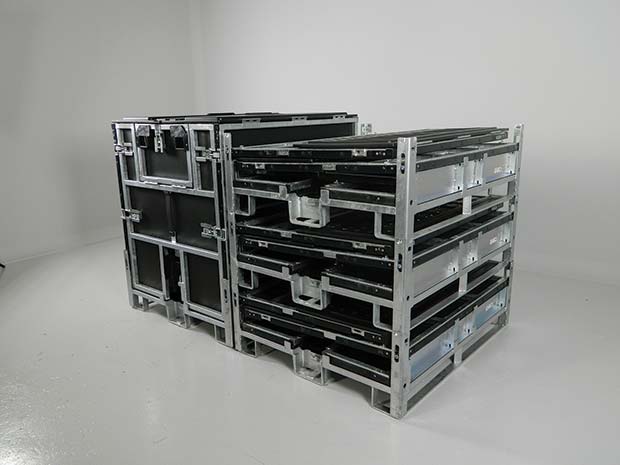In today’s world of global manufacturing, both inbound and outbound logistics are key ingredients to achieving a productive and profitable business.

The movement of hazardous liquids has traditionally been an expensive operation. Moving product over vast distances in many cases makes the return of the Intermediate Bulk Container ( IBC) either too costly or involves complex washing processes making it economically unviable to return IBC’s when they have only completed a single trip.
Due to this “One trip” scenario, when faced with the transportation of Hazardous liquids, most companies will look at their IBC as a necessary and mostly, costly solution for product movement.
Over many years the hazardous goods industry has been looking at alternatives to the traditional one trip units. Either rigid returnable units, usually made from expensive metals, or where the quantity of product shipped warrants it, tanker alternatives. Obviously both of these solutions have the negative effect of adding additional weight due to their traditional construction methods.
Additionally by continuing to use rigid tanks the ongoing issue of cost and difficulty associated with the cleaning of those units cannot be under estimated. The need to remove all chemical residues from the IBC before return trips, (as is required in some cases), further exacerbates the costs associated with the logistics operation.
Coupled with the inefficiencies of return freights costs, the impact on your carbon footprint is significant.
Milford IBC a designer and manufacturer of both dry goods and liquid IBC’s for more than 30 years has recently entered the market with its own solution to these concerns. Cognisant of the issues being faced with both manufacturers and end users, Milford IBC has introduced a UN certified model to its market leading range of foldable 1000 litre IBC’s.
The approach that Milford IBC took in tackling the issues being faced was to first spend time talking to customers to identify the shortcomings in existing IBC options and then to look at possible solutions to the problems currently being experienced.
A clear brief quickly identified that to be successful the Milford solution had to:-
• Fold for return trip
• Require no expensive cleaning
• Meet and pass UN testing
First and foremost was the issue of UN certification. This independently conducted testing involves a rigorous testing program to ensure that the final design of the IBC is capable of safely carrying a range of hazardous liquids.
Testing of IBC’s to achieve UN certification involves a barrage of drop, stack, and pressure testing to extraordinary levels to ensure that the design can not only meet minimum safe working requirements, it must exceed what would be expected to happen in any “normal” operating environment.
Early into the design and testing phase of the Milford solution it soon became apparent why the Dangerous/Hazardous Goods industry does not have access to a wide choice of folding UN certified IBC units. Although it seems that they would be the obvious solution to the identified problems of hazardous liquid logistics, the testing levels which must be achieved are in most cases a barrier to most IBC manufacturers.
After several years of design and testing, the Milford Qubit UN finally received its accreditation certificate in December 2013 and is truly a “game changer” for hazardous liquid logistics.
Now that the Milford IBC folding solution is available what are the benefits over traditional “One trip units”
• With the use of an approved internal liner to hold the contents, once the IBC has been emptied the liner can simply be disposed of. This option removes the added expense of cleaning, and also the need to transport the IBC to a cleaning plant, benefiting in a reduction in your carbon footprint, which helps to increase the savings in the supply chain.
• Due to the Qubit UN’s ability to fold, once emptied it can simply be folded and stacked in preparation for the return journey. In the same space that two rigid units would occupy on a truck, the Qubit UN can be stacked 6 high. As well as providing significant return transport efficiency, the storage footprint within the manufacturing/filling/warehousing facilities is also greatly reduced.
• The Milford Qubit UN has been designed with a true 1200x1000mm footprint so is compatible with most materials handling equipment.
• The life cycle of the Milford Qubit UN, as with all of the Qubit range of IBC’s offers the strength of steel with the benefits of plastic, so the user has the confidence that the Milford product will last for many years in a hazardous liquids environment.
Milford Qubit UN, the new addition the Milford IBC range of products truly is:
“Stacking Business in your Favour”
Milford IBC UK Ltd
Tel: 01189 797514




Comments are closed.